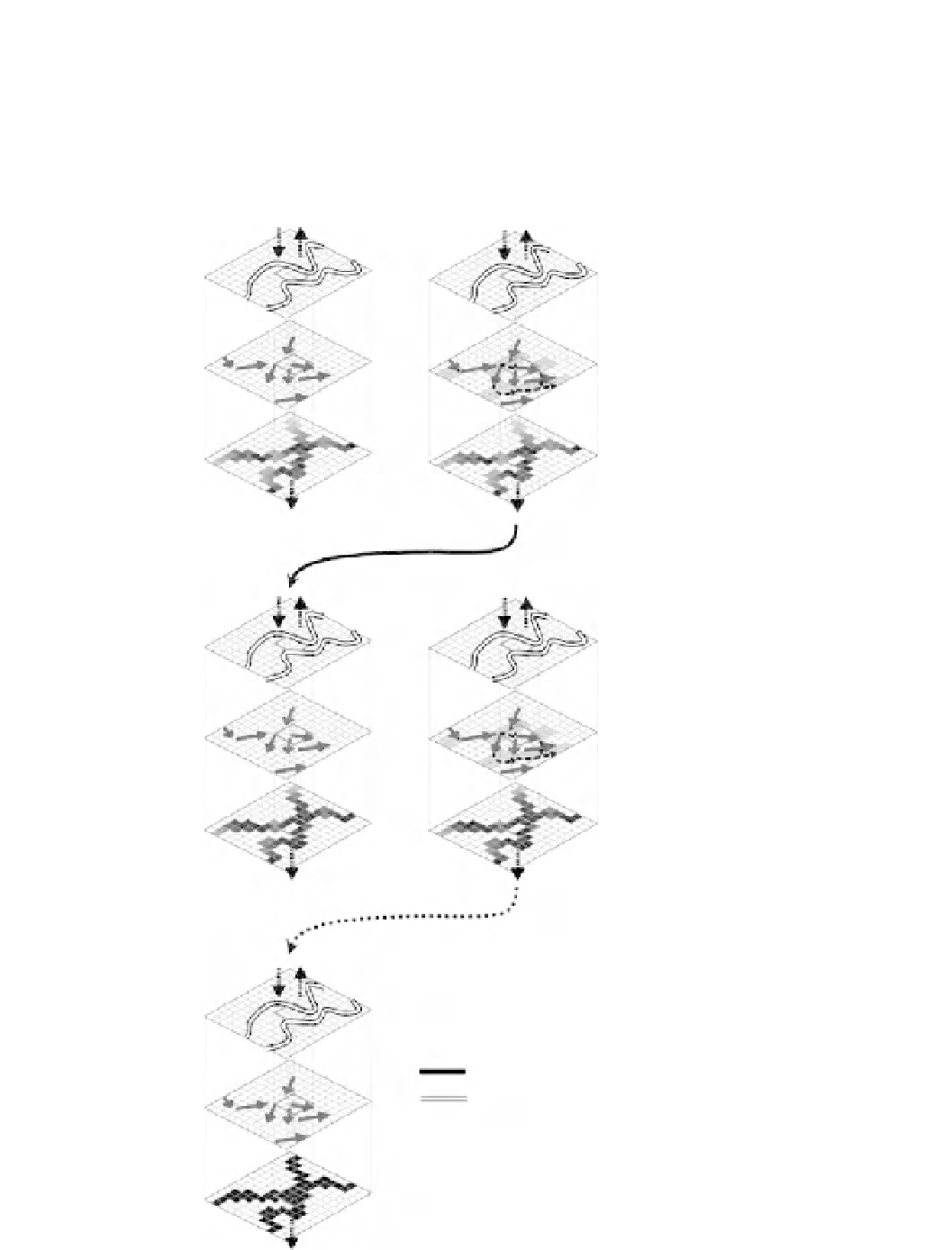Environmental Engineering Reference
In-Depth Information
distinguished between the static and dynamic aspects of
runoff production and thus longer timescale controls on
connectivity. Turnbull
et al
. (2008) developed this idea
further into concepts of looking at structural versus func-
tional connectivity in trying to evaluate the impacts of
runoff and sediment production on land degradation.
Wainwright
et al
. (2011) demonstrated how this idea,
and the feedbacks between structure and function, can
be applied to understanding runoff in temperate, agri-
cultural catchments and channel and near-channel flows
in a perennial stream, as well as to the dryland setting
(Figure 11.8). The timescales required for these feedbacks
t
= 1
Near surface
(atmosphere/vegetation)
Surface processes
Soil processes
Potential function -
structure feedback
t
= 2
Figure 11.8
Schematic diagram of feedbacks
between structural and functional
connectivity. The relative locations of values
of different variables which control structural
connectivity may initially (
t
=
1) be quite
discrete, leading to functional disconnections
which are only connected during events of
specific types or magnitudes, which in turn
can create structural feedbacks by
reorganizing landscape elements (e.g.
vegetation, soil types). Through time
(
t
Potential function -
structure feedbacks
t
= n
,
n
), these feedbacks may be
reinforced so that structural and functional
connectivity follow similar patterns, and the
system become difficult to reverse
(Reproduced with permission from
Wainwright, J. and Bracken, L.J. (2011)
Overland flow and runoff generation, in Arid
Zone Geomorphology
(ed. D.S.G. Thomas),
3rd edn, John Wiley & Sons, Ltd, Chichester,
pp. 235-68.).
=
2,
...
Variable A
Variable B

Search WWH ::

Custom Search